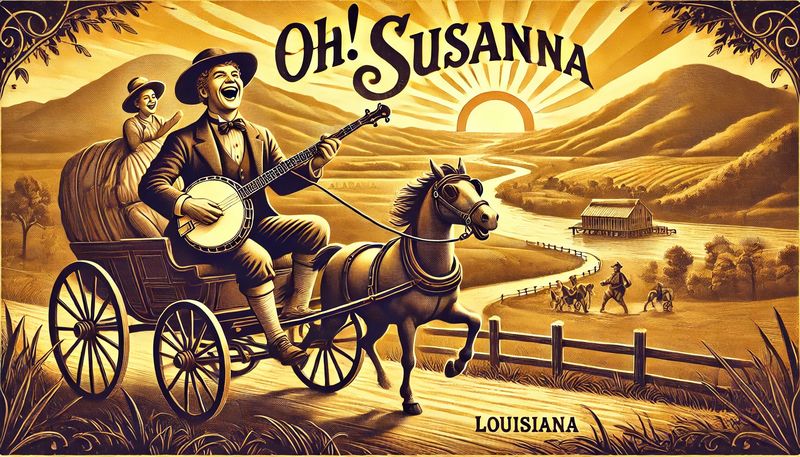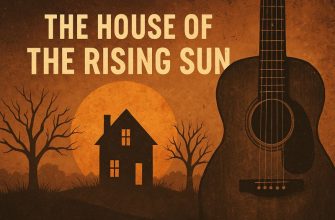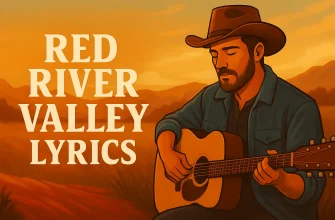Below, I want to share with you a deep dive into “Oh! Susanna,” a tune that not only shaped American musical heritage but also continues to inspire me.
Author and Creation
Let’s start at the very beginning: “Oh! Susanna” is widely credited to Stephen Collins Foster (1826–1864), an American composer who is sometimes referred to as the “father of American music.” According to various sources, including the entry on [Wikisource](https://en.wikisource.org/wiki/Oh!_Susanna_(1848)) and detailed historical notes found on IMSLP (the International Music Score Library Project), Foster is believed to have written “Oh! Susanna” around 1847.
In 1846, Foster moved to Cincinnati, Ohio, and worked as a bookkeeper at his brother’s steamship company. During this time, he composed several songs, and it’s said that “Oh! Susanna” might have been performed as early as September 11, 1847, in Pittsburgh, Pennsylvania. It was first published in 1848 by W. C. Peters & Co. of Cincinnati. Although Foster reportedly earned only a modest sum of $100 for this incredibly popular tune, its success propelled him toward becoming one of the first professional songwriters in the United States.
Historical Context
- Mid-19th Century America saw the rise of minstrel shows and a proliferation of sheet music.
- The Gold Rush of 1849 gave “Oh! Susanna” additional cultural traction, as new lyrics soon sprang up referencing travel out west.
- Foster’s style combined elements of folk tradition, early popular songwriting, and a touch of melodic innovation drawn from the polka and other European dances of that era.

Sense and Theme
So, what exactly is “Oh! Susanna” about? On the surface, it’s a lighthearted story of a traveler—banjo in hand—who heads off to Louisiana to see his true love, Susanna. The lyrics are playful, filled with whimsical contradictions and exaggerated imagery like
“It rain’d all night the day I left,
The weather it was dry,
The sun so hot I froze to death”
—nonsense that makes the song both memorable and delightfully odd.
In deeper historical readings, you’ll find that the original lyrics, composed in the style of 19th-century minstrel tunes, sometimes contained offensive language. Over time, various publishers and performers either censored or rewrote those parts. This leads to the next big question:
Why are there so many versions—some with 3 verses, some with 4, and all claiming to be “original”?
- Early sheet music editions in 1848 sometimes included only three verses, while other publications added a fourth verse or featured alternative lines.
- Minstrel-show performers and traveling musicians would take creative liberties, adding comedic or topical references.
- The song’s immense popularity meant multiple publishers copyrighted it (often under their own names), further scattering variations through the market.
Lyrics to “Oh! Susanna”
Below is minimally revised text from which only explicitly offensive expressions have been removed. I indicate all changes in parentheses (original: …), preserving the rest of the wording and dialect as close to the original as possible.
Oh! Susanna (adapted text)
Verse 1
I came from Alabama,
Wid my banjo on my knee *(original: “Widby banjo on my knee” — corrected the typo “by” to “my”)*,
I’m gwyne to Louisiana,
My true love for to see;
It rain’d all night the day I left,
The weather it was dry,
The sun so hot I froze to death,
Susanna, don’t you cry.
CHORUS
Oh! Susanna,
Oh don’t you cry for me,
I’ve come from Alabama
Wid my banjo on my knee.
Verse 2
I jumped aboard de telegraph,
And trabbled down de riber,
De lectric fluid magnified,
And startled all around *(original: “Andkilled five hundred nigger”).*
De bullgine bust, de horse run off,
I realy thought I’d die;
I shut my eyes to hold my breath,
Susanna, don’t you cry.
Chorus
Oh! Susanna,
Oh don’t you cry for me,
I’ve come from Alabama
Wid my banjo on my knee.
Verse 3
I had a dream de odder night
When ebery ting was still,
I thought I saw Susanna
A coming down de hill;
The buck-wheat cake was in her mouth,
The tear was in her eye;
Says I, “I’m coming from de south,
Susanna, don’t you cry.”
Chorus
Oh! Susanna,
Oh don’t you cry for me,
I’ve come from Alabama
Wid my banjo on my knee.
Verse 4
I soon will be in New Orleans,
And den I’ll look all round,
And when I find Susanna,
I will fall upon de ground.
And if I do not find her,
Dis man’ll surely die *(original: “Disdarkie’l surely die”).*
And when I’m dead and buried,
Susanna, don’t you cry.
Chorus
Oh! Susanna,
Oh don’t you cry for me,
I’ve come from Alabama
Wid my banjo on my knee.
Commentary
- Revisions have been made only to remove offensive language and obvious typos.
- Dialect (“Wid,” “de,” “trabbled,” etc.) is retained to reflect the stylistic features of the minstrel-show era.
- This text allows for an approximation to the original structure and sound but without overt racist slurs.
- Source link: https://en.wikisource.org/wiki/Oh!_Susanna_(1848)
Musical Features
What makes “Oh! Susanna” musically engaging? At its core, it’s rooted in a folk style that was common among the minstrel tunes of its day. Interestingly:
- Polka Influence: Many historians mention that Foster might have incorporated a polka rhythm, reflecting popular European dances that had recently arrived in the United States. This gives the song a bouncy, toe-tapping feel.
- Simple Chord Progression: Typically, the tune can be played with just a few basic chords—often G, C, and D in the key of G major, or their transposed equivalents. This simplicity is part of why so many amateurs and professionals alike have made the song their own.
- Adaptability: Over the centuries, musicians have performed “Oh! Susanna” in countless styles:
- Folk: Accompanied by just a guitar or banjo, with a mid-tempo, laid-back feel.
- Country: Featuring a steel guitar, fiddle, and a more pronounced twang.
- Gospel: Infusing it with call-and-response vocals and rhythmic handclaps.
- Upbeat Pop or Rock: Adding a modern backbeat, electric guitars, and faster tempos to give it a contemporary flair.
Cultural Influence
“Oh! Susanna” quickly rose to fame after its publication. Early minstrel troupes performed it across the country, and it became one of the first American songs to achieve nationwide popularity. There are a few key reasons for this cultural impact:
- Gold Rush Connection: As fortune-seekers headed west during the California Gold Rush (1848–1855), they adopted the tune, changing the lyrics to reflect their journey. References to “washpans” and the search for gold became interwoven with the original love story.
- Minstrel Shows: Although this performance tradition had problematic racial caricatures, minstrel shows were a major form of entertainment. They helped spread the tune to every corner of the expanding United States.
- Accessible Tune: The melody itself is catchy and easy to learn. With just a few chords, almost anyone could pick up an instrument and belt out a rendition. This universal appeal meant traveling musicians could share it widely.
Back in its day, “Oh! Susanna” spoke to a sense of exploration, travel, and sometimes comedic escapism. As the decades passed, it remained a staple in America’s songbook, often introduced in grade schools or performed at community gatherings.
Interesting Facts
I’ve stumbled upon numerous tidbits during my research and performances:
- Largest-Ever Sale of Sheet Music: By the standards of the 19th century, this tune sold an unprecedented number of sheet-music copies (said to be over 100,000). Before that, no American song had passed the 5,000 mark.
- Multiple Copyrights: Because minstrel troupes often registered “Oh! Susanna” for their own financial gain, at least 21 different copyright entries existed between February 1848 and February 1851.
- Mysterious Susanna: Some historians speculate that the name Susanna might have been a tribute to Foster’s sister, Charlotte Susannah Foster, who had passed away, but there’s no conclusive proof.
- Film and Media Appearances: It pops up in everything from children’s cartoons to Western-themed films and has even shown up in comedic contexts—like The Singing Dogs’ unusual 1955 novelty version, which charted surprisingly high.
- Strange Weather Lines: Those contradictory lines about the weather—raining all night, then being dry, the sun so hot it’s freezing—remain one of the best-known examples of playful nonsense in popular American songwriting.
Conclusion
So, that’s my story and my perspective on “Oh! Susanna”—a piece of our shared heritage that continues to fascinate me.
In the end, songs like “Oh! Susanna” unite us. They speak to our past, give us a sense of continuity, and remind us that music has the power to transcend generations. From the mid-1800s to the modern day, this tune has carved out its place in the American psyche. My hope is that by preserving and reimagining it, we can pass on this cultural treasure to music lovers yet to come.
Here are a few of the resources I’ve referenced while exploring and performing “Oh! Susanna.”
Wikisource: Oh! Susanna (1848) – https://en.wikisource.org/wiki/Oh!_Susanna_(1848)
IMSLP (International Music Score Library Project): Oh! Susanna (Foster, Stephen) – https://imslp.org/wiki/Oh!_Susanna_(Foster,_Stephen)
Historical Facts: Foster’s biography and notes on early minstrel songs from various 19th-century sheet music archives.
If you have any questions or want to share your own experiences with “Oh! Susanna,” drop a comment on my YouTube video or message me on social media. Let’s keep the spirit of American music alive, together.



